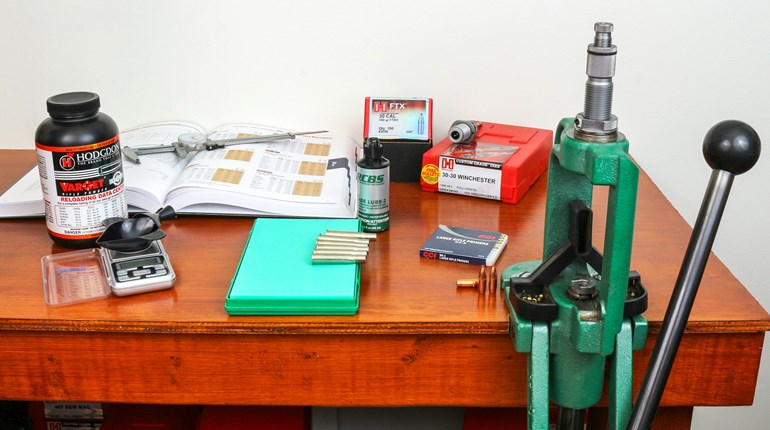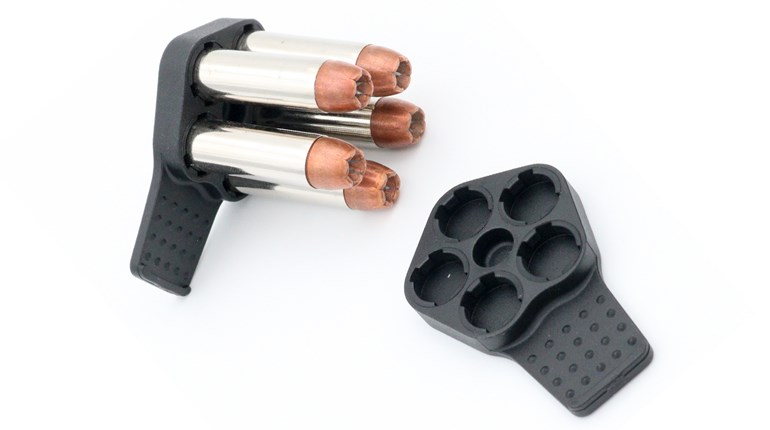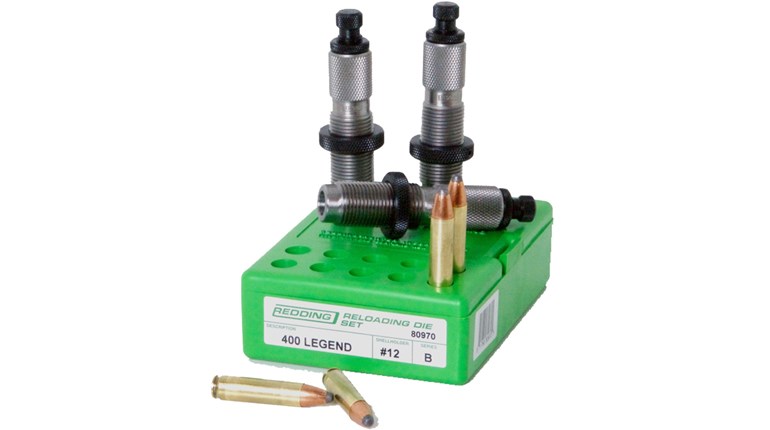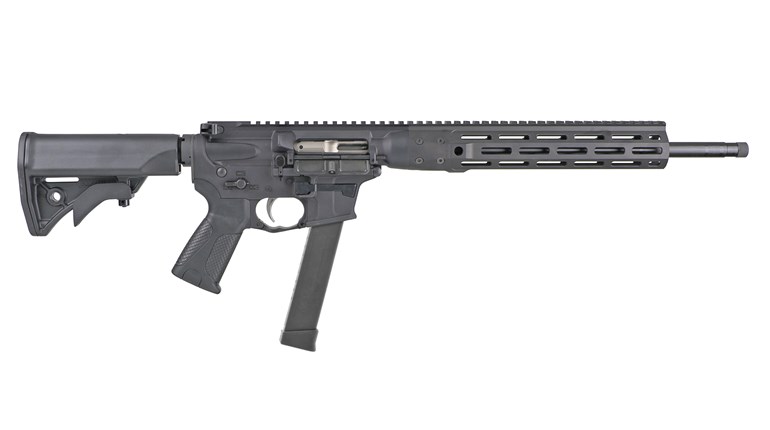
We’re not surprised that Revisiting the Reload brought queries from thoughtful readers; always a good thing in our view, even if not everyone agreed with us at every point. Our tongue-in-cheek bossiness was rightly understood as well—naturally there’s room for some variation, questions or discussion. There’s even a case to be made that these round out or clarify the conversation in just about every case, and hence seem particularly deserving of answers.
Q: “You recommended learning the speed reload first because it puts correct fundamentals in place, and I can accept the principle. My worry is wear and tear on magazines. Aren’t tac reloads a lot easier on gear (since mags are returned to pocket or pouch, and not dropped)? Most of my training takes place on either very hard surfaces, or dirty ones. Won’t this shorten magazine life, or reduce reliability through wear and outright damage?”
… always, always, always mark your mags, and relegate the oldest and/or least reliable to practice duty only.A good point, but a thorny one. Right off, we posit that the availability and quality of magazines should be a factor in pistol selection. Classic “good news, bad news” though, as you probably anticipate.
Inexpensive magazines are no help if the pistol itself is unreliable; this latter is a “no-go” in absolute terms. If the pistol you shoot the best has $50 mags, then you’re stuck at the other end of an unappealing continuum. But don’t give up too easily here: There are world-class defensive firearms that can claim decades-long magazine life, but a) you’ll still have to train to run them well, b) some magazine maintenance will still be necessary, and c) be alert for and turn a blind eye to obsessed detractors (or fans, for that matter). Try them for yourself, and before you buy if at all possible.
Next, always, always, always mark your mags, and relegate the oldest and/or least reliable to practice duty only. This way, a little flakiness may be turned into a conditional benefit—you’ll have spontaneous malfunction drills in your training. Be careful this doesn’t go too far, however, and erode your confidence. A pre-ignition hesitation can work its insidious way into your head if this is overdone, and be quite literally deadly in its own way. Practice malfunction drills as malfunction drills, and recognize that this is the beginning of the end for these magazines. If they produce occasional, roughly random malfunctions, that’s a good thing. When the cussin’ starts, trash them.
The other end of the magazine age spectrum can be a trap too: As you introduce new magazines, make double-darn-sure they actually work in your carry firearm. Surprisingly subtle changes can completely derail previous good performers by brand or type. We’d then recommend that the most reliable not be used for practice, but rotated through a duty cycle to preserve feed lips and rest magazine springs. If performance gets slowly worse, it’s most likely the spring—keep some Wolff or ISMI spares on hand.
A simple expedient can protect mags from the most dramatic cause of damage, and about which you’re right to be cautious: Dropping. By padding the surface onto which it falls when you train (or shortening the drop distance), life can be vastly extended. We have Glock mags, for instance, that are entering a second decade of astonishing reliability, but these aren’t the only examples we know of. Such precautions are absolutely commonplace in competitive shooting, especially in locations where a static (or “standing”) reload takes place. Shooters in certain divisions are understandably reticent to simply dump $100 (or more) mags on very hard or dirty surfaces.
The fix is straightforward: A layer or two of remnant carpet. These are fairly easy to come up with for no cost (especially if your sensitivity to obnoxious colors is not exaggerated), but they can also be bought for a pittance. You do not need some fancy material, either—plain carpet seems to have little propensity to bounce your mag onto those hard or detritus-covered surfaces you’re trying to avoid in the first place.
A straight piece of technique advice also applies here: If you’re having to “flip” your pistol to the side to add momentum in order to get a mag out, there’s a problem. The whole point of “drop free” mags is to actually have them drop free. If you keep the gun high and vertical as you press the magazine release, any quality firearm/mag combo should separate with ease. The flip, on the other hand, adds both time to the reload and velocity to the expelled magazine. Both are counterproductive, and perhaps an indication that the attention of a gunsmith is necessary.
Remember not to practice dry reloads with either empty magazines or real rounds.Remember not to practice dry reloads with either empty magazines or real rounds. Use snap caps—or some other sort of “action proving” dummy—to protect the feed lips from a botched insertion, and also to support them internally should they fall top-down. The “no real ammo” business should require no explanation: This is an engraved invitation to a negligent discharge, and must be studiously avoided.
Q: “I don’t agree about bullet nose direction. Careful examination and a little actual measuring demonstrate that bullet nose rearward requires at least a third less of a turn as the mag approaches the magwell. What am I not seeing, or have you not tried this?”
Nope. We agree. But there is a hidden problem, and a bad one. As you go faster and faster—and you will, with practice—there’s a quite natural tendency to round off motions. This isn’t necessarily a problem, and in fact is where small increments of speed come from—a shorter motion, even at the same speed, takes less time. Ergo, faster.
The difficulties appear when such rounding happens just as the top round in the magazine clears the edge of a mag carrier, or even a pocket. This top round can be pushed forward some small distance (how far in literal terms depends on the design of the magazine feed lips) while still in the magazine. This has two possible downsides: One is merely ugly, but the other, a potential disaster.
If your top projectile has been brushed/bumped forward far enough, the back-of-the-mag-to-front-of-the-cartridge distance can cause a collision at either the front or rear of the magwell. Usually, this will pop the top round out, and a reinsertion at the cost of a second or so (and one round) will fix you right up. Not helpful, but not precisely calamity, either.
But truly horrible timing (ours, in other words), will have this round pop out in the magwell, and with the fresh magazine following right behind. The devilish thing here is that no external indication of the fault exhibits, and we’ve seen folks try to reinsert the magazine three and four times before the bewilderment transfigures to understanding and redress. Three, four, five seconds? Easily. Eight or 10? Occasionally.
But truly horrible timing (ours, in other words), will have this round pop out in the magwell.Two points, then. Bullets nose forward prevents this by pushing the cartridge helpfully back should contact occur at all, and the roundish bullet nose—as opposed to the “proud” presentation of the cartridge rim—is a tougher target for the collision in the first place.
There’s a type of mag carriage that may trump this issue altogether in some venues. These mag pouches position magazines “radially” with the front of the mag away from the body (Safariland here and here, for instance). Reduced rotation of the magazine to align with the magwell as it approaches the pistol is what this gets you, all while keeping the index finger properly along the front of the magazine and “pointing” at the reload. The downside, and where the rubber meets the road for carry, is that there is nothing about such a setup that could be called “sleek” or “discreet.” But fast, and efficient with belt real estate? You betcha.
At the “brass tacks” level, you’re right, but we can’t exactly concur.
Q: “The Tomasie reload is pretty amazing, but it’s done with a race gun: Metal on metal, and a tapered magazine going into a huge magwell. How is this a valid comparison?”
For all the reasons you suggest, it does indeed have shortcomings. But the main reasons we like it are still valid: His mechanics are essentially perfect. The head is high, which means the eyes don’t have to materially stray from the threat axis, he looks unmistakably at his magwell to nail the insertion of the new magazine, and his release of the “spent” mag is perfectly timed—the replacement arrives just as the first mag is sufficiently out of the way. (No waiting for the old one to fall all the way clear before going for the replacement, or—vastly worse—waiting for one action to complete before starting the next.)
The other criticisms are frankly very discerning—well done. But some tame experts, at least those with no dog in this metaphorical hunt, tell us that the lower metal-on-metal coefficient of static friction is overstated. The slower “feel” of polymer-on-metal or polymer-on-polymer drops is therefore mostly subjective.
This point seems unequivocally made in another Tomasie vignette from his AMU days—here at ~1:40. If memory serves, the demonstrated reload is in the low .90s of a second, and is actually measured shot-to-shot using a Production Division, polymer-on-polymer pistol much more like a conventional carry arm. His dry run is conversely on a highly optimized “race gun,” and also not shot to actual shot, which would almost certainly slow it to a snail-like high .70s (instead of the low .70s). Bwahahaha. Keep in mind mere mortals practice for years to be half as fast, and a shot-to-shot 1.40 second reload will make you the envy of many a USPSA match shooter (or even the slightly retention-obsessed IDPAers).
Small firearms don’t lend themselves well to many techniques that work with larger versions, and reloads are one of the most glaring departures.Both the Tomasie examples are screamin’ fast, however, because his fundamentals are so breathtakingly tuned. His considerable talents are rewarded by diligent practice, and that’s a formula that’ll work for nearly everyone to the limit of their individual capacities.
Q: “Most of what you’re suggesting works great with my full-sized guns, and with what I’d call a larger compact. I’ve already noticed improvements in both speed and repeatability. When it comes to the pistol I carry the most (an M&P SHIELD), the magazine won’t drop free. Any suggestions?”
No question, this is “a fly in the ointment” in multiple senses. Small firearms don’t lend themselves well to many techniques that work with larger versions, and reloads are one of the most glaring departures. (You’ll often see instructors bar wee gats in some classes, and it’s not necessarily because they’re grouches. It’s a practical reality that the technique divergences on small guns are a time sink which can utterly derail a class).
Here’s a reference that may help. In it, a small gun magazine swap method that is reasonably speedy (with practice) and exceptionally sure-handed is covered in some detail, and it’ll work well with many Shield-sized guns. It does assume that the magazine release is in the “modern” location—weak side, behind the trigger guard.
Q: “Just wondering: Aren’t the odds high that defensive shooting will take place in poor light, or even darkness? If this is true, haven’t you overstated the importance of “looking at the reload?” There’s a good chance you won’t be able to see the magwell at all. I practice in total darkness for this very reason.”
We take them in order: The odds are good that you’ll have compromised or minimal light; No, we don’t believe we have overstated the importance (more here in a sec…); Yes, you should be able to do this essentially blind, and good on you for practicing any or all manipulations in the dark.
All these postulations are sound; we just think they succeed only if your reload basics are already very sound. Our apprehensions are based mainly on contrary examples, often repeated: If you go after this higher—and desirable—level of skill prematurely, you may seat problems rather than proficiencies. The undoing of these is unhappier and harder work than getting it right more slowly, but the first time.
There’s an important sidebar to be made that applies with special urgency to any low-light situation: Assuming you can’t “get off the X,” the first priority then becomes target identification. If the light is bad enough to hamper a reload, it’s well more than bad enough to hamper prudent, positive target ID, to say nothing of actually shooting. No technique consideration, fancy gear, whatever, is a pardonable distraction from this moral (and legal) priority.
Now keep practicing those reloads, and Carry on.
Editor’s Note: If you want to vet your reload step-by-step against another top-flight resource, USPSA Grand Master Shannon Smith does this with no-nonsense aplomb here. Decidedly worth a look.
Frank Winn has been studying arms and their relationship to tyranny, meaningful liberty and personal security all his adult life. He has been a firearms safety/shooting instructor for more than 20 years, and earned state, regional and national titles in several competitive disciplines.

































